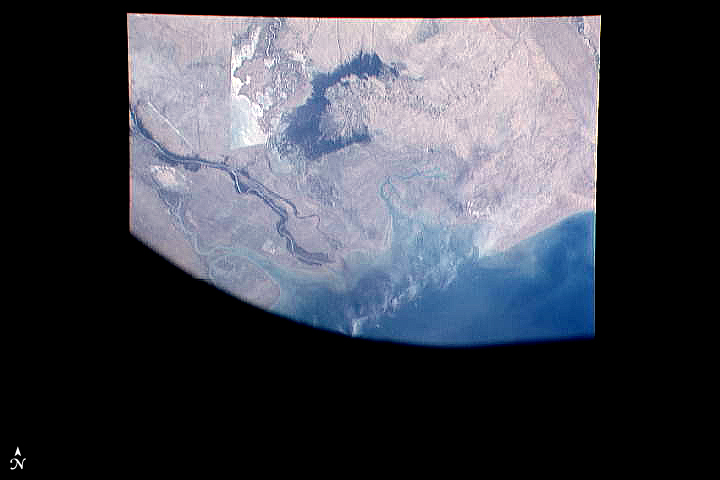30 Years Ago: 1st Shuttle Astronauts Photograph Earth's Cradle of Civilization

Astronauts have been beaming home snapshots of Earth from space for 50 years, but it was only in 1981 that explorers gazed down at their home planet from a winged spaceship. One of their first views: the cradle of Earth's civilization.
Thirty years ago today (April 13), NASA astronauts photographed the so-called " Fertile Crescent" in the Middle East through a window on the space shuttle Columbia, the world's first reusable spaceship. Shuttle astronauts John Young and Robert Crippen took the photo during their historic two-day test flight of NASA's first shuttle. [More photos from NASA's First Space Shuttle Flight]
The photo shows the stretch of land between the Tigris and Euphrates rivers, which nurtured several of the earliest known cities and empires, according to a description by Mike Carlowicz at NASA's Goddard Space Flight Center in Greenbelt, Md.
Young and Crippen used a handheld camera to snap the photo during their 15th orbit around Earth. The entire mission, called STS-1, lasted 54 hours.
April is a special month for human spaceflight. Not only is April 12 the anniversary of NASA's first space shuttle flight for NASA, the date is also the anniversary of the world's first human spaceflight in 1961 by cosmonaut Yuri Gagarin. Gagarin launched into orbit aboard the Soviet space capsule Vostok 1 and orbited the Earth during his 108-minute flight, which ushered in the era of human spaceflight.
There were hundreds of celebrations around the world yesterday to mark Gagarin's history-making spaceflight, as well as many NASA events to commemorate the 30th anniversary of the space shuttle program. [30 Years of NASA Shuttle Missions]
NASA is retiring its shuttle program later this year after two final missions to make way for a new exploration program aimed at sending astronauts to visit an asteroid by 2025. The space agency's shuttles will ultimately be sent to museums across the United States for public display.
Breaking space news, the latest updates on rocket launches, skywatching events and more!
This article was provided by OurAmazingPlanet, a sister site to SPACE.com.
For the science geek in everyone, Live Science breaks down the stories behind the most interesting news and photos on the Internet, while also digging up fascinating discoveries that hit on a broad range of fields, from dinosaurs and archaeology to wacky physics and astronomy to health and human behavior. If you want to learn something interesting every day, Live Science is the place for you.

